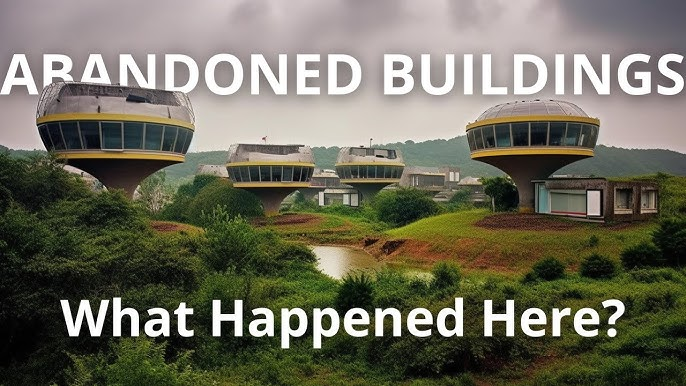Abandoned structures often evoke a sense of mystery and melancholy, standing as silent witnesses to the passage of time and the impermanence of human ambition. Yet, some of these deserted sites were once grand and costly endeavors, representing significant money, labor, and resource investments. Today, these expensive abandoned structures offer a glimpse into the dreams and failures of the past, as well as the economic, political, and environmental factors that led to their downfall.
Ryugyong Hotel, North Korea
The Ryugyong Hotel in Pyongyang, North Korea, is one of the most infamous abandoned structures in the world. Construction of this 105-story, pyramid-shaped skyscraper began in 1987, with plans to make it the tallest hotel in the world. However, due to the collapse of the Soviet Union and the subsequent economic crisis in North Korea, the project was halted in 1992. The hotel remained an unfinished shell for nearly two decades, earning it the nickname “The Hotel of Doom.” Although construction resumed in 2008, and the exterior was eventually completed, the interior remains unfinished mainly, leaving the $750 million investment primarily wasted.
Hashima Island, Japan
Hashima Island, also known as Gunkanjima or “Battleship Island,” was once a thriving coal mining facility in the early 20th century. At its peak, the island housed over 5,000 residents in a complex of concrete buildings. However, as Japan transitioned from coal to petroleum in the 1960s, the mine’s profitability declined, leading to its closure in 1974. The island was subsequently abandoned, and its eerie, decaying structures are a stark reminder of industrial decline. Despite being abandoned, Hashima Island is now a UNESCO World Heritage Site. It has gained notoriety as a filming location for movies like “Skyfall,” though its development and maintenance cost was significant.
Pripyat, Ukraine
Pripyat, a city in northern Ukraine, was once a thriving community built to house Chornobyl Nuclear Power Plant workers. However, following the catastrophic Chornobyl disaster in 1986, the city was evacuated and has remained uninhabited. The abandoned city, with its Soviet-era architecture and remnants of daily life, stands as a haunting reminder of the nuclear disaster. The cost of building Pripyat, combined with the massive expenses of the disaster and subsequent cleanup, makes it one of the most expensive abandoned sites in the world. The ghost town now attracts tourists and researchers, but the environmental and human costs remain immeasurable.
The Sanzhi UFO Houses, Taiwan
The Sanzhi UFO Houses in Taiwan were an ambitious project to create a futuristic holiday resort for wealthy travelers. Designed in the shape of flying saucers, the colorful, pod-like structures were built in the late 1970s. However, the project was plagued by financial difficulties, construction accidents, and rumors of being cursed. These issues, combined with a lack of interest from potential buyers, led to the site’s abandonment before it was ever completed. Despite the millions invested, the UFO houses were left to deteriorate until they were eventually demolished in 2010, marking the end of a strange chapter in Taiwan’s architectural history.
Buzludzha Monument, Bulgaria
The Buzludzha Monument in Bulgaria is a massive, futuristic structure built in the 1970s as a tribute to the Bulgarian Communist Party. Perched on a mountain peak, the building features a saucer-shaped design and was once adorned with mosaics and socialist symbols. Constructed at over $35 million (adjusted for inflation), the monument was intended to celebrate communism. However, following the fall of the Soviet Union, the building was abandoned, and it has since fallen into disrepair. Despite its dilapidated state, the Buzludzha Monument remains famous for urban explorers and photographers.
Conclusion
These expensive abandoned structures tell stories of ambition, innovation, and the unforeseen circumstances that led to their demise. Whether halted by economic collapse, political upheaval, or environmental disaster, these sites serve as poignant reminders of the impermanence of human endeavors. They stand as monuments to what was built and the dreams left behind.





